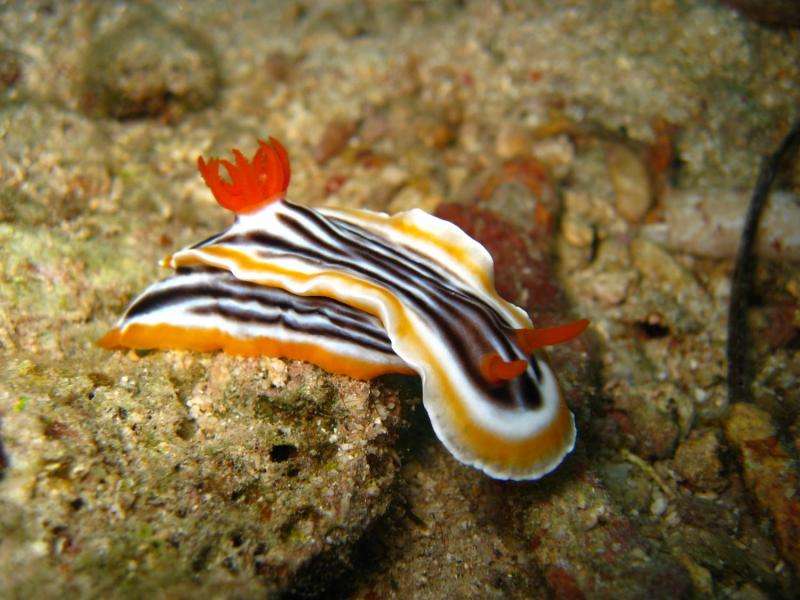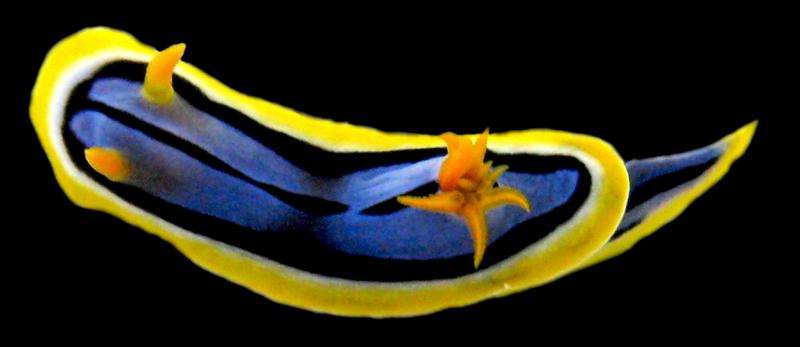Small but deadly: The chemical warfare of sea slugs

Brightly coloured sea slugs are slurping deadly chemicals and stockpiling the most toxic compounds for use on their enemies.
While the phenomenon sounds like the stuff of horror films, it is common practice for these "butterflies of the ocean", a new University of Queensland-led study published today in PLOS One has found.
Dr Karen Cheney of UQ's School of Biological Sciences said the multi-disciplinary study examined five closely-related nudibranchs (sea slugs) collected from the Great Barrier Reef and from South East Queensland, Australia.
"These carnivorous creatures are well-known to scuba divers for their beautiful colours and intricate patterns," she said.
"Science has known that many sea slugs obtain toxins from what they are eating, such as sponges, but in our study we found they selected only one toxin to store a particularly toxic compound called Latrunculin A.
"Toxicity tests demonstrated that even the smallest amounts of the compound killed brine shrimp."
"Further tests conducted at the Institute for Molecular Bioscience demonstrated that this compound was more toxic to cancer cell lines than other compounds found in sea slugs."

Dr Cheney said sea slugs used chemical defences and bright colours to warn potential predators away, similar to poison dart frogs and brightly coloured butterflies which signalled they were toxic by their colours.
"However, we still are learning if colour patterns are related to the strength of their chemical defences," she said.
"We are investigating whether the most brightly coloured sea slugs are the most toxic, and also whether cryptic sea slugs that blend in with their environment also contain strong toxic defences."
She said while fish recognised visual signals such as bright colours, the presence of the same toxic compound in the closely related sea slugs suggested that something else was at play. It was possible that other predators, such as crabs, might use other ways of detecting the toxicity of their prey.
One future research avenue would be to explore how these creatures were able to eat their prey and transport toxic chemicals without causing internal damage.
The study tapped into the expertise of co-author Professor Mary Garson of UQ's School of Chemistry and Molecular Biosciences, who has been researching chemicals stored by marine animals for the past 20 years.
"One interesting study aspect is the potency of the compound which five different sea slug species chose to store," Professor Garson said.
"This is a well-studied compound which kills cells. In this study we've uncovered a new use for it in an ecological context."
Natural products play an invaluable role as a starting point in the drug discovery process.
"The role this chosen toxin plays in the natural environment potentially could be transferred in the medical field to guide research into treatments for cancer research or neurodegenerative disease," Professor Garson said.
Professor Garson said a good analogy for sea slugs, because of their bright colours, was the "butterflies of the ocean".
Journal information: PLoS ONE
Provided by University of Queensland


















